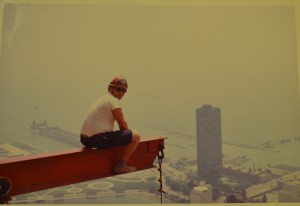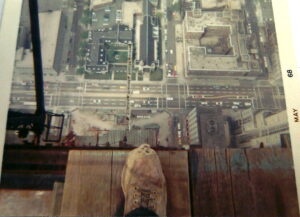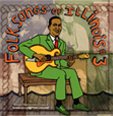Company of Folk has a particular interest in laborlore, a term coined by pathbreaking folklorist and labor activist Archie Green in the 1960s. Green employed the term, as well as occupational folklore, to describe the varied and rich traditions of music, stories, poetry, culture, and art of the American working class.
Prior to Green, the academic community had shunned working class culture, though Illinois poet Carl Sandurg and journalist George Korson had devoted considerable attention to collecting and publishing labor songs and stories. Green, however, became a tireless advocate of the laborlore cause and opened up the field to new and innovative studies among workers, both native born and immigrant, as varied as carpenters, ironworkers, pile drivers, store clerks, coal miners, hairdressers, musicians, and taxi drivers. Green devoted particular attention to unionized workers and the traditions which they developed and nurtured in their respective trades and organizations.
Today, folklorists, anthropologists, historians, musicians, and journalists are collecting the lore, song, and art of people in a variety of occupations. Their work now provides us with great insight into workers’ contribution to American culture and society.
Since its founding in 2007, Company of Folk has been deeply involved with laborlore. Through the Folksongs of Illinois CD series, the ironworkers documentation project, and fieldwork throughout the state, Company of Folk has collected important working-class traditions in Illinois and made its findings available through a variety of outreach programs.
In 2016 a grant from the National Endowment for the Arts allowed Company of Folk to launch a special series of programs entitled “The Art of Work.” The project featured programs by Chicago artists whose work is tied to the history of Chicago workers, occupational traditions, and the city’s rich labor history. Mexican muralist Hector Duarte, Guatemalan-Mayan marimba player Carlos Mejia, Irish accordionist Jimmy Keane, and Japanese shamisen and taiko drum artist Tatsu Aoki presented programs on worker art in the fall of 2016. What’s more, thanks to a second grants from the NEA in 2017, Company of Folk is offering twelve programs in underserved neighborhoods in Chicago. Programs will be held at Holy Cross Immaculate Heart of Mary in Chicago’s famous Back of the Yards neighborhood, as well as McKinley Park Library, Pullman State Historic Site, the Illinois Labor History Society, and the Brighton Park Library. Additional information on individual programs is available on our home page and our Facebook page.

Marimba player Carlos Mejia with Jennifer Ortiz at Holy Cross Church in 2016 A program of Company of Folk’s project “The Art of Work.”
Company of Folk director, Bucky Halker, has worked closely with the Illinois AFL-CIO and affiliated local unions, the University of Illinois, the American Folklife Center at the Library of Congress, and a host of museums, libraries, and historical societies in Illinois and elsewhere to collect laborlore, art, and song. Halker has also disseminated his findings through recordings, radio and television appearances, public programs, conferences, and concerts in Illinois and throughout the United States and Western Europe. He has also sought to bring worker artists to the public’s attention and provide opportunities for them to speak in their own voices.
If you or your organization are interested in any of the laborlore projects of Company of Folk, please contact them. Company of folk would also welcome the opportunity to assist you with a program or a workshop on collecting oral histories and laborlore in your community, work group, or union. Company of Folk would also be glad to assist you in bringing workers and their art to a larger arena where their work might find a wider audience.









